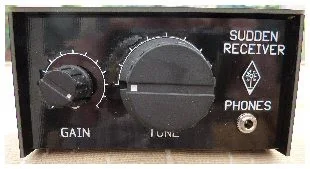Lulu just announced free shipping on the book (to U.S. addresses only) for the whole summer. Starting now. But before you order, consider these words of warning from one reader:
Bill,
I just finished your Soldersmoke book. I really enjoyed it - but...
I got the radio and electronics bug a bit late and was 23 years old before I got my ham license. I was truly fascinated by it all. Then I started wanting to learn why it all worked. It was truly a challenge to start figuring out how
electronic circuits work with nothing more than my average intellect and a few books. I strained my gray matter over the electrons and P and N type material. Finally I decided to ignore it and move on - just put the 'trons into the black box and pick them up on the other side. I eventually became proficient enough to build kits and do some basic troubleshooting. I had SSDRA and a bunch of stuff by Doug DeMaw, but never could get too deep into it. Eventually I had what I believe was a neat miss from lightning and station KC4GIA went silent for a number of years.
Then I found your podcast. I've really enjoyed it. I've slowly started getting back on the air. I've bought my old dream rigs (Drake Twins, B line) and built an ATS3B. But the urge to learn more and progress to the true homebrewer level has taken hold. It's all your fault. I blame you completely. I now have a copy of EMRFD, the latest ARRL Handbook, and even have started trying to figure out LTSpice. Ok, that's also the fault of the Hands On column in QST.
I do have to thank you for the excellent descriptions of the electrons moving through P and N material. I actually think I've got it now. Now if I can figure out all this biasing, and impedance matching, etc. I might get somewhere. Your description of how you have to match impedance through different stages makes sense, but I'm still fuzzy on how to determine the impedance in the 1st place, etc. I'm truly excited by the possibility of learning how to design circuits on my own rather than building by rote. Again - it's all your fault.
Back to the book. I really enjoyed the story of the 17M DSB rig you built in the Azores. It was like an
adventure story. Very cool. I'm still a bit vague on why DSB, but you seem to like it, so whatever moves you my friend. I am also intrigued by the satellite contacts. I had always thought you had to spend a small fortune on an az-el rotating antenna array. I'm looking forward to trying it out with normal antennas. My only satellite contacts have been through RS-12 (I think that's the right number) using the 15 and 10 meter bands. I don't think there is anything out there using that mode any more.
I also find it fascinating that a guy who used to live a little over an hour from my QTH in Winchester, VA and is now halfway around the world has had such an impact on my enjoyment of the hobby. If you do end up back in the DC cesspool, I hope to get the chance to meet you.
Final thought - Audio Book! I'm used to you talking to me. There ought to be a way to sell a download or something. I think the book is awesome, and may even become a scribbled in resource at some point, but an audio version would be a good companion to the print version. Just a thought...
Thanks for the motivation. You've brought me back to what's fun in Amateur Radio - learning!
Mark
KC4GIA
 Paul, M0XPD, reports that he has joined the DSB revolution and has put a homebrew DOUBLE Sideband WSPR signal on the air. The rig is pictured above. So I can no longer claim to be the ONLY DSB WSPR station in the world. FB Paul. For more details go to Paul's site:
Paul, M0XPD, reports that he has joined the DSB revolution and has put a homebrew DOUBLE Sideband WSPR signal on the air. The rig is pictured above. So I can no longer claim to be the ONLY DSB WSPR station in the world. FB Paul. For more details go to Paul's site: Note that both of my colleagues in radio eccentricity are from Britain, a land that takes justifiable pride in its eccentric boffins!
Note that both of my colleagues in radio eccentricity are from Britain, a land that takes justifiable pride in its eccentric boffins!














